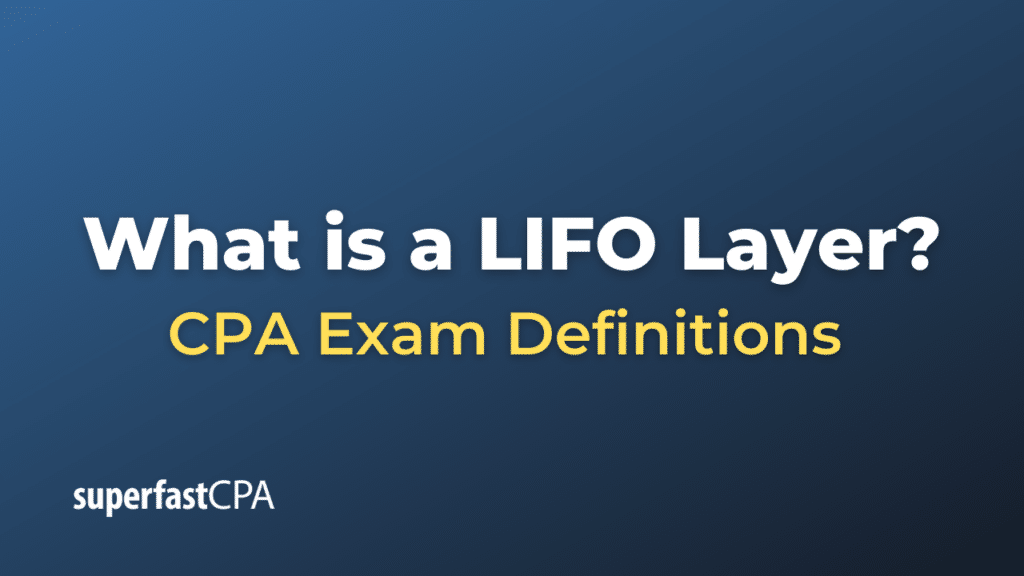LIFO Layer
A LIFO (Last-In, First-Out) layer is a term used in the context of inventory accounting for businesses that utilize the LIFO method of inventory valuation. In LIFO accounting, a business assumes that the last items added to inventory are the first ones to be sold.
A LIFO layer refers to a group of goods that were purchased at the same cost. When new inventory is purchased at a different cost, a new layer is added. The “layers” of inventory thus represent groups of items bought at different times and at different costs. When inventory is sold, it’s taken from the most recent (top) layer first.
If the price of inventory is rising (which is often the case due to inflation), the most recent layers will have a higher cost. Therefore, using LIFO (and thus selling from the most recent layers first) often results in a higher cost of goods sold (COGS) and lower net income reported on the income statement, compared to other inventory accounting methods like FIFO (First-In, First-Out).
However, it’s worth mentioning that if a company sells more than its purchases in a given year, it will ‘dip’ into its older LIFO layers (also called LIFO liquidation). Liquidating old LIFO layers can lead to lower COGS and higher profits because these older layers often have lower costs associated with them. But, it can also result in higher income taxes.
Remember, the use of LIFO for tax reporting purposes requires the use of LIFO for financial reporting due to the LIFO conformity rule in the United States. This may not be the case in other jurisdictions. Always consult with a financial advisor or accountant for specific accounting practices.
Example of a LIFO Layer
Let’s use an example to illustrate the concept of a LIFO layer.
Let’s say a bookshop buys books at different times and different costs:
- In January, they buy 100 books at $10 each.
- In February, they buy 200 books at $12 each.
- In March, they buy 150 books at $11 each.
Each purchase creates a new LIFO layer:
- The January layer has 100 books at $10 each.
- The February layer has 200 books at $12 each.
- The March layer has 150 books at $11 each.
In April, the shop sells 300 books. According to the LIFO method, the books sold come from the most recent layers. So, the 300 sold books will be accounted for as follows:
- First, all 150 books from the March layer ($11 each) are sold.
- Then, 150 books from the February layer ($12 each) are sold.
At the end of April, the remaining inventory (and LIFO layers) would be:
- 50 books at $12 each (from the February purchase).
- 100 books at $10 each (from the January purchase).
If the bookshop continues to sell books, they’ll sell the rest of the February layer before moving down to the January layer. Each of these “layers” of inventory represents a different cost level, which is why they’re referred to as LIFO layers.
Remember, in a period of rising prices, the LIFO method results in a higher cost of goods sold (COGS) and lower inventory value, which can impact the bookshop’s reported profitability and income taxes. If prices are falling, the impacts would be reversed.













